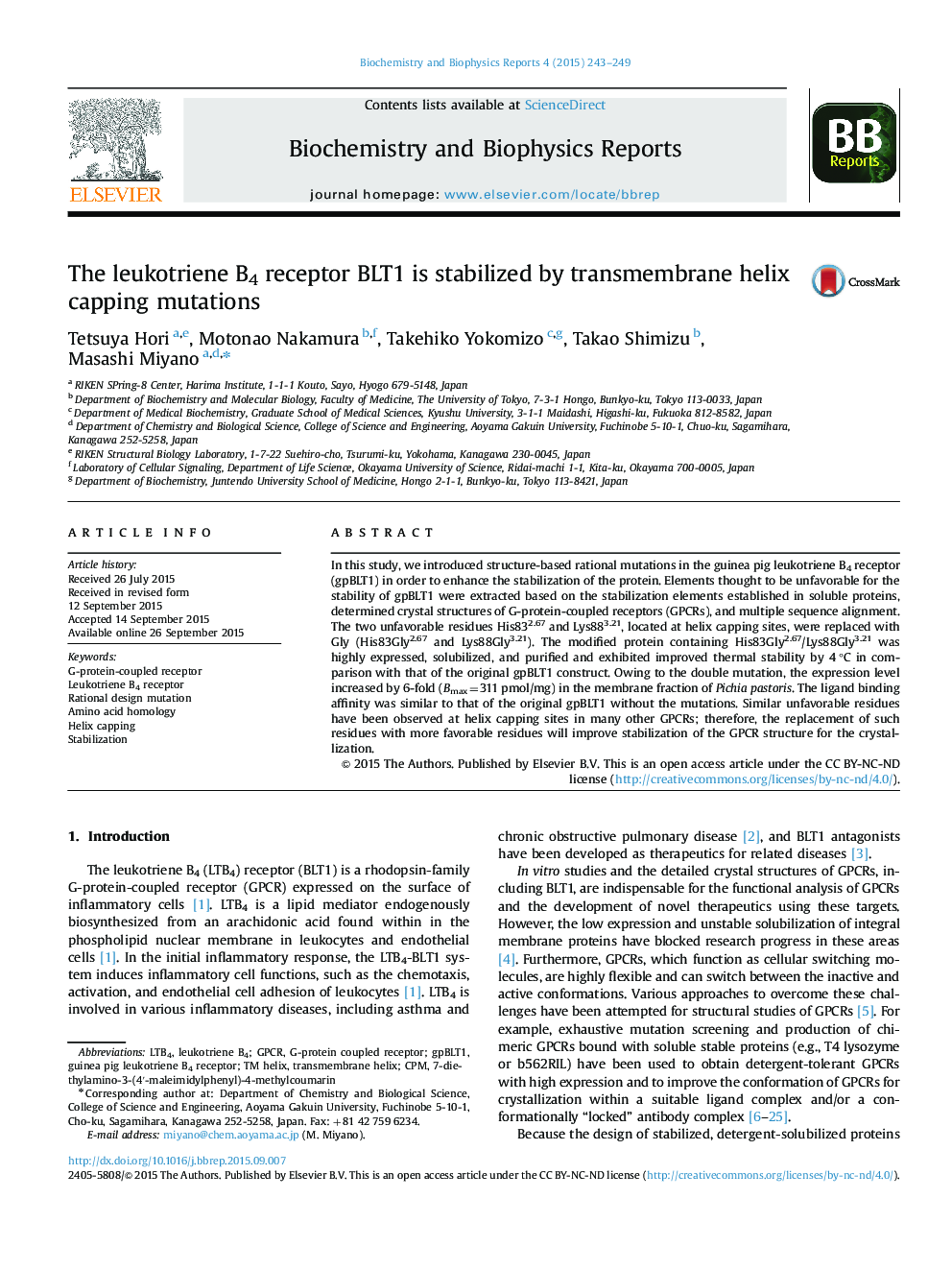| Article ID | Journal | Published Year | Pages | File Type |
|---|---|---|---|---|
| 1941823 | Biochemistry and Biophysics Reports | 2015 | 7 Pages |
•Point mutations were rationally designed to stabilize LTB4 receptor (BLT1).•The stability of mutant His83Gly2.67/Lys88Gly3.21 improved by 5 °C.•BLT1 expression by P. pastoris was increased 6-fold.•Mutations were designed to replace unfavorable residues at the helix capping site.•This method would be useful for the stabilization of the other membrane proteins.
In this study, we introduced structure-based rational mutations in the guinea pig leukotriene B4 receptor (gpBLT1) in order to enhance the stabilization of the protein. Elements thought to be unfavorable for the stability of gpBLT1 were extracted based on the stabilization elements established in soluble proteins, determined crystal structures of G-protein-coupled receptors (GPCRs), and multiple sequence alignment. The two unfavorable residues His832.67 and Lys883.21, located at helix capping sites, were replaced with Gly (His83Gly2.67 and Lys88Gly3.21). The modified protein containing His83Gly2.67/Lys88Gly3.21 was highly expressed, solubilized, and purified and exhibited improved thermal stability by 4 °C in comparison with that of the original gpBLT1 construct. Owing to the double mutation, the expression level increased by 6-fold (Bmax=311 pmol/mg) in the membrane fraction of Pichia pastoris. The ligand binding affinity was similar to that of the original gpBLT1 without the mutations. Similar unfavorable residues have been observed at helix capping sites in many other GPCRs; therefore, the replacement of such residues with more favorable residues will improve stabilization of the GPCR structure for the crystallization.
Graphical abstractFigure optionsDownload full-size imageDownload as PowerPoint slide
